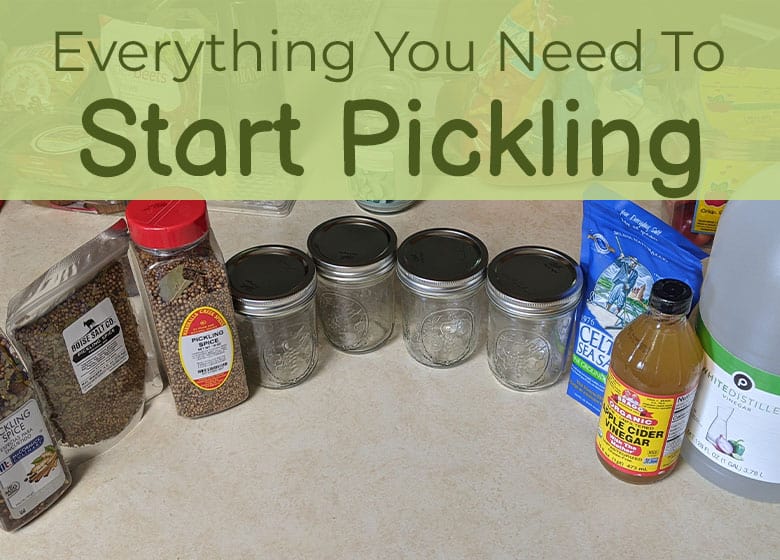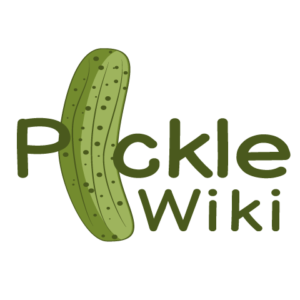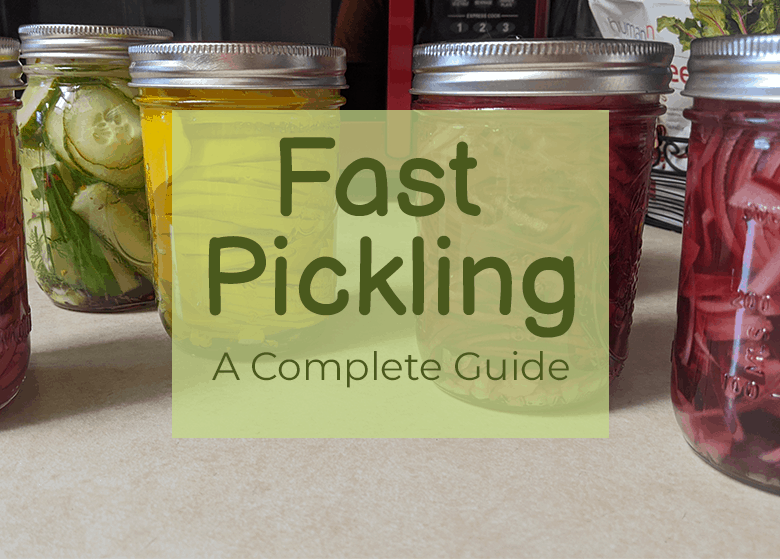Sometimes you purchase too much produce from your local market and can’t eat it all before it starts to sour. But, thankfully, if you’re a fan of crunchy, sour, or even sweet things, there’s an easy solution to this problem! You can pickle your produce fast.
You can pickle your produce quickly by making a brine with just vinegar, water, sugar, and salt using a saucepan, mason jars, and a refrigerator. Slice your cucumbers, or any other type of produce, and let them soak in the brine while chilling in the fridge. Fast pickling your produce this way will extend the shelf-life of your fruits and veggies by up to two months.
Sound good to you? Keep reading to learn exactly what is needed to pickle produce quickly, as well as a few tips and tricks that the pros use to ensure everything is both safe and delicious!
How to Pickle your Produce Fast
While we all might know what a classic pickle is- that iconic crunchy, sour cucumber, how much do you know about the actual pickling process?
Pickling is a process used in culinary practices all over the world in which foods are soaked in a solution to prevent them from going bad. The pickling process might actually be much easier than you had thought. There are two main types of solutions used around the world for pickling – vinegar brine and salt brine.
Vinegar Brine Vs. Salt Brine
If you’ve ever eaten a kosher pickle, chances are, you’ve eaten a pickle made in a vinegar brine.
The purpose of the vinegar is to act as an acid in which bad bacteria that rot food can’t survive. This means your pickle stays better longer and will have a sour taste thanks to the vinegar. Pickles made in vinegar brine take less time to make than salt-brined pickles, and have a different flavor profile.
The other kind of pickles, salt-brined pickles, actually go through a fermentation process. Salt brine used to pickle produce, at room temperature, catalyzes fermentation. Foods that have been fermented grow probiotic bacteria (which are incredibly good for your gut flora) which makes the pickle less likely to develop bad bacteria that make food go bad.
The salt brining pickle process takes far longer than the vinegar brining process. Sour pickles and kimchi are both pickled foods made in this way.
Can you guess which method we’ll be using to make fast pickles? That’s right, vinegar-brine! Now that we have all the basics of pickles down, let’s talk about how you can pickle your produce fast to increase their shelf life while having fun making them!
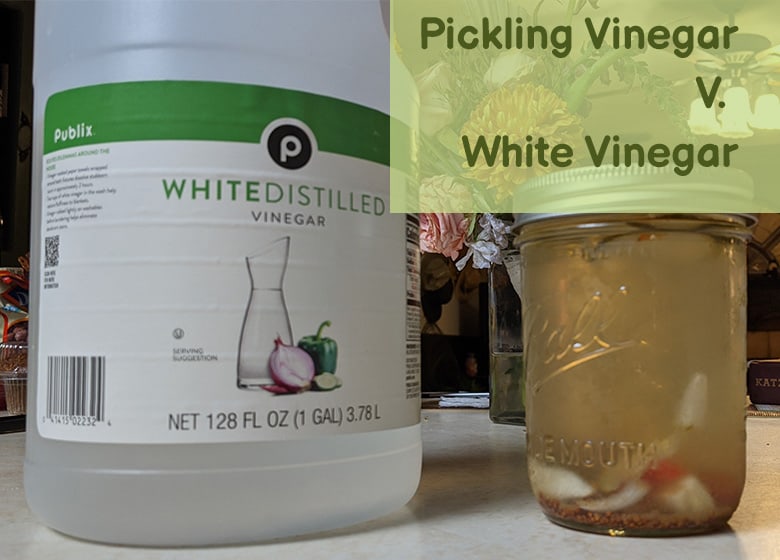
Here’s a Super Speedy Way to Make Pickles
While the aforementioned pickling methods typically go through a long process, there are ways to pickle your fruits and veggies quicker if you’re in a time crunch. If your interest in pickling your produce has been peaked, keep reading for a step-by-step guide on pickling your produce in the quickest way possible.
The following recipe will be a base recipe for general fast pickling. The remainder of the article will fill you in on brine alterations to suit your tastes, great additional ingredients to play around with, and the perfect produce to use for your pickling project.
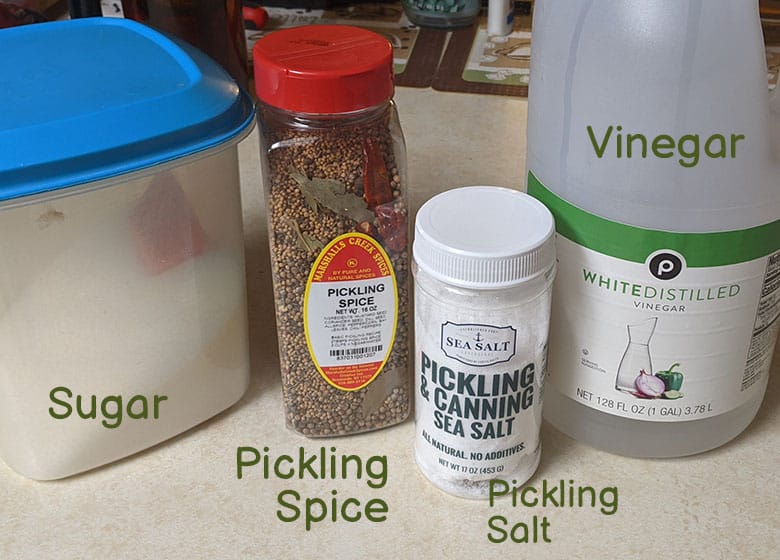
The ingredients you will need include:
- Vinegar (if you don’t have vinegar, you can experiment with any other citrusy acids of at least 5% strength!)
- Water
- Sugar
- Salt
You will also need food-safe jars, a stove, and a saucepan or pot. Our favorite type of jar for homemade pickles are the classic mason jar. You can find a pack of five 12-ounce mason jars on Amazon here.
For this basic recipe, it’s best to have a 1:1 ratio of vinegar to water. The following measurements for salt and sugar are based on using two cups of vinegar/water. Alter your measurements for salt and sugar depending on how much liquid ingredient you are using.
You don’t need much salt because the vinegar is doing most of the work, but to add a little bit of savoriness, use up to a tablespoon. As for the sugar, you really don’t need much of this. If you’re pickling veggies, use up to one tablespoon. If you’re pickling fruits, you can use up to two tablespoons.
- Combine your vinegar, water, sugar, and salt in a pot or saucepan.
- Bring your brine base to a boil, make sure all ingredients have properly dissolved.
- Once it reaches a boil and all ingredients have been well-dissolved, remove from heat. Let it cool down until it’s warm to the touch, but no longer boiling.
- Fill a mason jar or any other type of glass container to the brim with your fruits or veggies of choice.
- Fill the rest of the mason jar up with the pickle brine you’ve made. Make sure the brine reaches up to the top of the jar.
- Put the jar(s) in the refrigerator and allow them to soak in the brine in there for anywhere from a few days to a week.
- And voilà! You have pickled produce that will last up to two months in their sealed jar in the refrigerator.
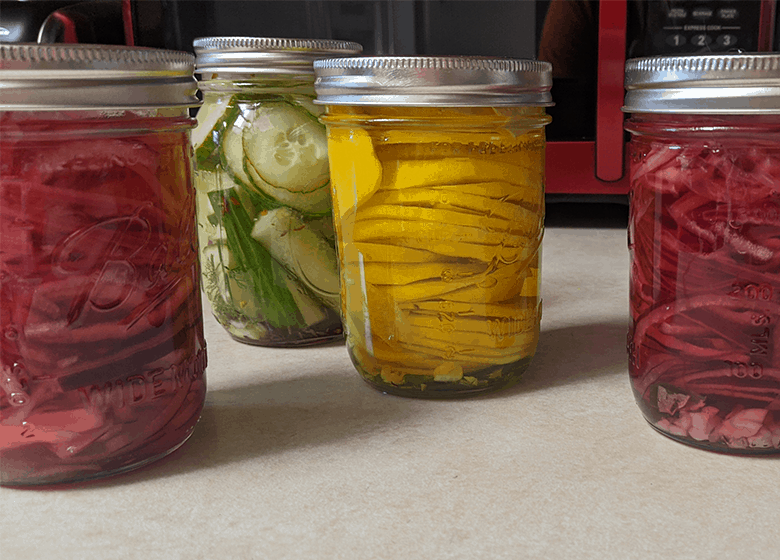
This is a very basic recipe you can use to make a very basic (albeit tasty) pickle. If you’re more of a visual learner, check out this YouTube video on how to make quick pickle brine using the same four ingredients.
Keep reading for ways to customize your brine to fit your tastes best.
Brine Alterations You Can Make to Optimize Your Quick Pickle
There are plenty of ways to alter the aforementioned recipe to achieve your desired outcomes. From altering the brine ratio to changing the amount of sugar or salt, let’s look into the best ways to cater your pickles to your tastes.
Hot vs. Cold Brine
If you look up fast pickling methods online, you’ll either find a recipe that tells you to use piping-hot brine or tells you to refrain from boiling your brine at all. There’s a good scientific reason for this.
Using hot brine right off the stove allows your pickles to pickle even faster- you can pickle anything in hot brine in under an hour. The boiled vinegar will help bring all the flavors together in a nice, even way. However, using boiling brine comes with the risk of slightly cooking your produce initially. This can reduce the satisfying crunch you seek when eating a pickle.
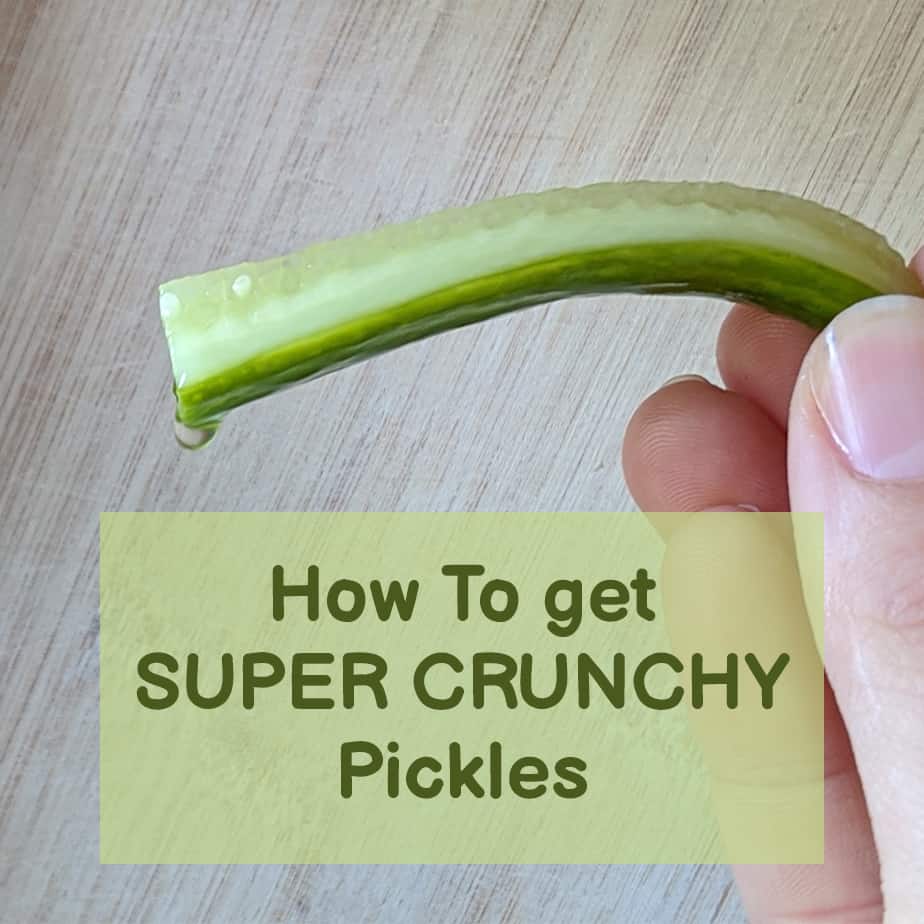
On the other hand, if you never boil the brine, you won’t have the added risk of cooking your pickle. However, the flavors won’t blend the same as they would if you used hot brine, and it will take significantly longer to pickle- up to a week.
The recipe provided is a happy medium. The brine will be warm, allowing for the flavors to meld together a little better than cold brine, but it also won’t have as much of a risk of cooking the pickle as piping-hot brine will.
Consider your priorities when deciding:
- If you want pickles fast and don’t mind a little crunch reduction, boil the brine and add it to the jar while it’s piping hot for pickles in under an hour.
- If you have more time and want the pickles to sit in the solution for longer, don’t boil the brine and add it to the jar cold. You’ll have pickles ready in a week.
- If you want the happy medium, follow the provided recipe as is. They can be ready in a few days.
Even if you choose the lengthier option, this method of making a pickle is still far quicker than making a traditional pickle with salt brine- one week is nothing in the pickle world. Choose the option that suits your needs best.
Altering the Vinegar to Water Ratio
You can alter the vinegar to water ratio depending on the desired flavor of your pickle.
The vinegar is the key to getting that sour, bitter flavor. Depending on your tastes, you can increase or decrease the amount of vinegar to change how sour or mild the pickles will taste.
- If you like lip-puckering sour pickles with a sharp, bitter flavor, increase the amount of vinegar in the brine by anywhere from one to three tablespoons. Do not use any more than three.
- If you prefer mild pickles, decrease the amount of vinegar by anywhere from one to three tablespoons. You don’t want to use too little vinegar, however, because the vinegar acts as the main preservative. Too little and the shelf life will decrease.
Experimenting with Your Sugar and Salt
While the basic recipe recommends using up to one tablespoon sugar for veggies and up to two for fruits as a rule of thumb, this amount is subjective to individual taste. It’s important to know how much sugar and salt will affect your pickle so you can make the right choice for yourself.
- If you want to make a pickle more akin to, say, bread and butter pickles, you’ll want to add in more sugar than one tablespoon. Don’t go over two tablespoons though, you’ll lose some of that necessary savory flavor and there’s no getting it back. For pickles like these, you’ll want to lessen the amount of salt as well. Use this guideline for fruits, too.
- If you want a truly sour pickle, omit the sugar altogether or use significantly less. Make up for it with a little bit of extra salt.
Now that we know how to customize our brine to make the perfect pickle for ourselves, it’s time to talk about some of the best additional ingredients to add to elevate our pickles flavor.
The Best Additional Ingredients for Quick Pickles
There are a number of classic and experimental additional herbs and spices to add to pickles that all have very different effects, and certain ingredients work great with certain fruits or veggies. Let’s take a dive into the best additional ingredients for your pickling pleasure.
- Garlic is the number one additional pickle ingredient. It works great in both sour and sweet pickles- you’ll find that most pickles at the grocery store have minced garlic floating around in there. Add up to two tablespoons of minced garlic per jar for a boost of flavor.
- Dill is another great ingredient for pickles. But did you know that dill flavor is strongest in the seeds? Dill fronds are mostly decorative. Add both to salty pickles for flavor and garnish.
- Black peppercorn is another classic. This seasoning works best in salty pickles. Don’t add too much- up to one teaspoon per jar.
- Fennel is a perfect option for licorice-lovers. If you’re the kind of person who is disgusted by licorice, stay miles away from this ingredient. Otherwise, add fennel to your sweet or salty pickles for a complex flavor profile.
- Jalapeno is the ultimate addition for lovers of spicy foods. Add this to your jar of sweet or sour pickles for an extra kick. You have two options- you can chop up the jalapeno for some more spice, or put the entire pepper in the jar for a little less. Either way, you won’t need more than one jalapeno pepper to have the desired effect.
- Coriander seeds are a great addition for people who don’t think cilantro tastes like soap (I’m so sorry if you have that gene.) Pair with fresh cilantro when pickling bell peppers for a clean and refreshing pepper pickle! Try out these organic coriander seeds for your cilantro pickle masterpiece.
- Mustard seed is another favorite. Pair this with fresh peppercorn, dill, and garlic to make a classic “dill pickle” version of any veggie you choose!
- There are even spices out there created specifically for pickling! Try out this pickling spice from Amazon to make this a little easier on yourself.
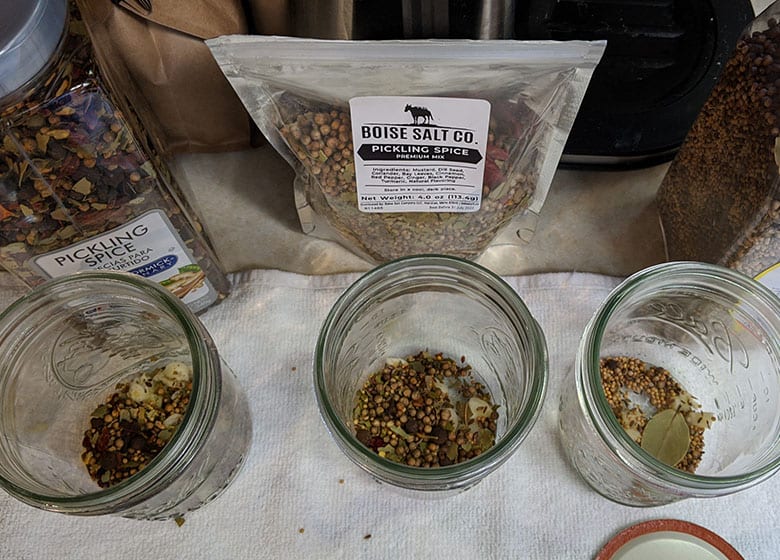
The Best Fruits and Veggies for Quick Pickling
It’s important to know that you can pickle virtually any fruit or vegetable, but the flavor profiles of some suit the pickle flavor a little better than others. If you’re looking for a little bit of inspiration or advice on what produce to pickle with, use the following list as your holy grail of the best fruits and veggies to pickle with.
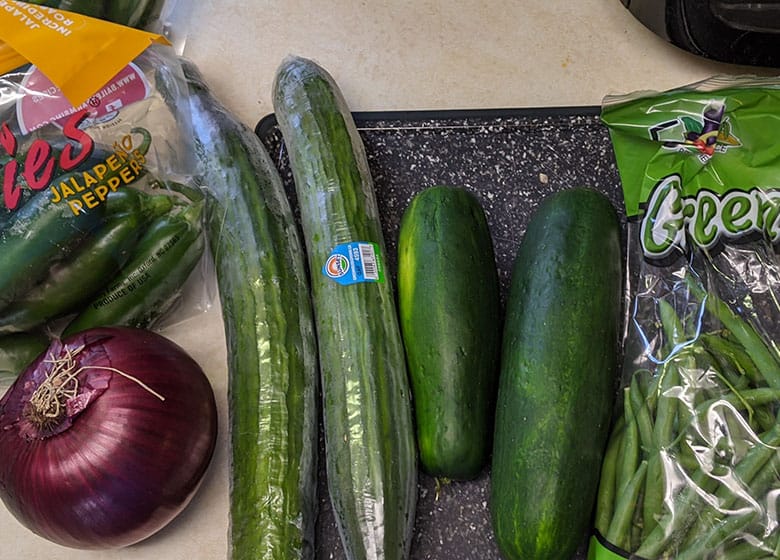
- Classic Cucumbers: A must-have on this list, cucumbers are arguably the single best veggie to pickle. Many people choose to pickle their cucumbers because they tend to go bad faster than other vegetables. Experiment with sweet and sour to find your perfect ‘cuke!
- Garlic: Pickled garlic is possibly my favorite type of pickle in the world. Use entire garlic cloves and you’ll notice a change in the flavor profile- they’re no longer too strong to eat raw. Swap out white vinegar for rice wine vinegar and add soy sauce and a little extra sugar in the brine to create Korean-style pickled garlic.
- Watermelon Rinds: If you’ve never heard of this before, you might think I’m crazy- but keep reading. Inedible raw watermelon rinds become pear-like in texture when pickled and make a great topping for salads. Use a little extra sugar to elevate these bad boys.
- Peaches: This one is a Southern classic. Blanch to remove the skin and pit, and cut your fresh peach into bite-sized pieces or slices. Use a little extra sugar and add some cinnamon for a tasty winter treat.
- Citrus fruits like orange, lemon, and lime all do well when pickled. It works especially well with limes and lemons because they become less tart and easier to eat when pickled. Use the whole fruit or try putting just the rinds in for citrusy variety.
- Onions are my new favorite thing to pickle. They go on everything. so well. Burgers, salads, nachos are some of the things I enjoy them most with. The taste isn’t the only reason I love them so much, Pickled onions have one of the most satisfying textures I have had the pleasure of trying.
- Okra is a perfect contender for pickling. Okra is a ‘mucilaginous’ vegetable, meaning it releases an edible slime when cooked. While the slime is good for you, the slippery texture can be unsettling to some people. Use cold brine to pickle okra to prevent them from being cooked and releasing slime, and add peppercorn and garlic for a full-bodied taste.
- Bell peppers are another perfect contender for pickling due to their crunch- if you thought bell peppers couldn’t get crunchier, think again. Use these when fast pickling to make a pickle fan favorite.
- Tomatoes are an unsuspecting perfect choice for fast pickling, too! They work fantastic as a topping on burgers or hot dogs, and even just taste great straight out of the jar. Use grape or cherry tomatoes for some bite-sized goodness.
Frequently Asked Questions about Fast Pickling
If you’ve got additional questions about the fast pickling process, look no further. This section covers the most frequently asked questions about making pickles quickly.
Can I reuse pickle brine to make more fast pickles?
While it’s understandable that you would want to save your pickle brine if at all possible, the answer to this question is absolutely not. NEVER reuse homemade pickle brine to make another batch of pickles- it is incredibly unsafe to consume after one use. The vinegar in the brine is only meant to keep bad bacteria out of your pickles for one batch.
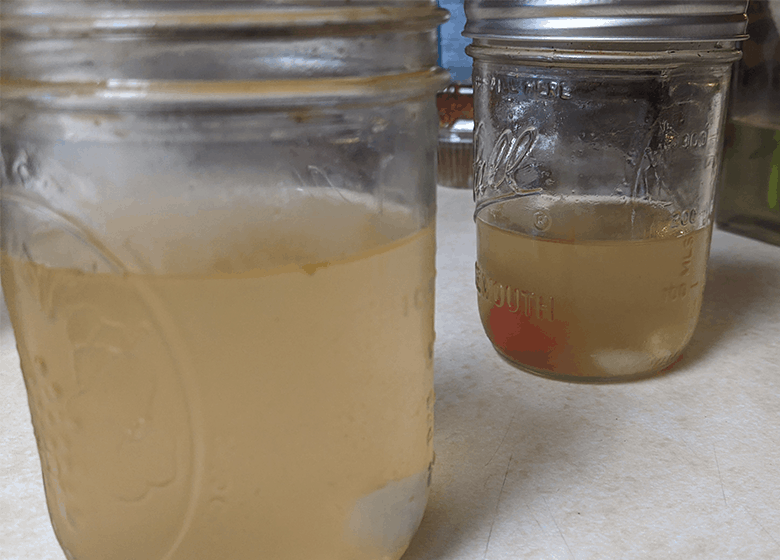
Make sure to toss the pickle brine once you’re finished with it and make a fresh batch of brine for pickles in the future.
However, you can save fast pickling brine that hasn’t been used to pickle anything yet. Cover the brine and store in the refrigerator for up to two days.
Does any vinegar work for fast pickling?
Most vinegars are perfectly okay for fast pickling, but not all of them. Most vinegar will work well as an acid that will keep bad bacteria out in both regular and fast pickling, but you’ll want to specifically stay away from aged or concentrated vinegar like balsamic or malt vinegar. Anything else is fair game, so have some fun with it!
Experiment with various types of vinegar to see which ones you like best. You can try white vinegar, rice wine vinegar, apple cider vinegar- the world is your oyster. You can even mix these vinegars to find the right ratio for you.
The best vinegar for pickling will have no more than a 5% acidity level, like this one on Amazon. Most vinegar brands include their acidity levels on the front of the packaging.
My produce is starting to go bad, should I fast pickle it to keep it fresh?
No. Do not use any produce that is showing signs of rotting or molding for pickling. The vinegar in the brine helps protect fresh produce from bad bacteria- it’s not meant to and cannot eliminate bad bacteria that is already present.
Plan ahead if you’re going to pickle fruits and veggies by choosing fresh produce from your local market that you’ll use specifically for pickling use. Pickle the produce soon after purchasing for the best effect.
Can I use a jar that doesn’t seal for fast pickling?
As long as you put the jar in the refrigerator immediately after it cools to room temperature, yes! However, it is important to know that if the jar cannot be sealed, it will not keep for as long as a sealed jar. That’s why fast pickling is even better than regular pickling for unsealed containers. Treat unsealed pickles like you would fresh food in the refrigerator.
Therefore, if your only option is an unsealed container, I recommend using the boiling-hot brine to pickle your produce. That way, your pickles will be completed in a shorter amount of time, and you’ll be able to enjoy them before they start to go bad.
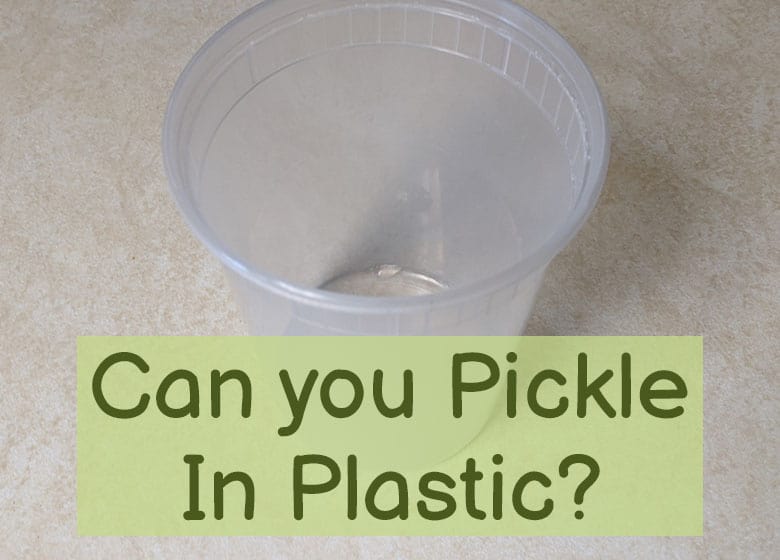
Why are my fast pickles too bitter and shriveled?
The most likely reason your fast pickles would be too bitter or shriveled is that you put in too much vinegar into your brine. Don’t be hard on yourself- this is a very common mistake for beginners.
As previously mentioned, you can alter the ratio to suit your tastes, but it’s important not to deviate from the 1:1 vinegar/water ratio by more than a few tablespoons. Otherwise, your pickles will likely become inedible.
Why are my fast pickles so soft?
The most likely reason your fast pickles would be soft is that you put in too little vinegar or too little brine. This is also a very common beginner mistake, so don’t worry about it too much.
Once again, you can alter the ratio to suit your tastes, but only to a certain extent. But make sure you aren’t deviating by more than a few tablespoons, and make sure the amount of brine you put in your jar reaches to the top!
Can I use any type of jar for fast pickling?
Unfortunately, no. Not all jars out there are created equal, and if you’re putting brine in there at boiling or warm temperatures, the jar may crack or break if it’s not made to withstand high heat.
The best jars to use for pickling are classic glass mason jars. Make sure not to reuse commercial pickle jars (or any other type of glass commercial jar) either- they usually aren’t made for home pickling.
As far as plastic jars go, you can use these to pickle as long as they are food-grade. You can check the label on your container to see if it’s heat resistant. Sometimes, your pickles might pick up flavor or color from the container. So if you’re not 100% sure your plastic containers are safe for pickling, just go with the mason jars.
To make it easier on you, we’ve included a link to a pack of 24 deli-grade food containers you can find on Amazon here.
Can I use any kind of salt for fast pickling?
The answer is almost entirely yes, but if you were making pickles with a salt-based brine, the answer would be different. Because our fast-made pickles use vinegar as the main preservative ingredient, however, the salt used in the brine is mostly for taste.
Sea salt, kosher salt, and granulated salt are all great options. You can even kill two birds with one stone with this organic kosher sea salt. Iodized table salt, however, can make your pickle liquid cloudy and the iodine salts can “change the color and taste of foods being pickled” (Source: Luv2Garden), so it’s best to avoid using that type of salt.
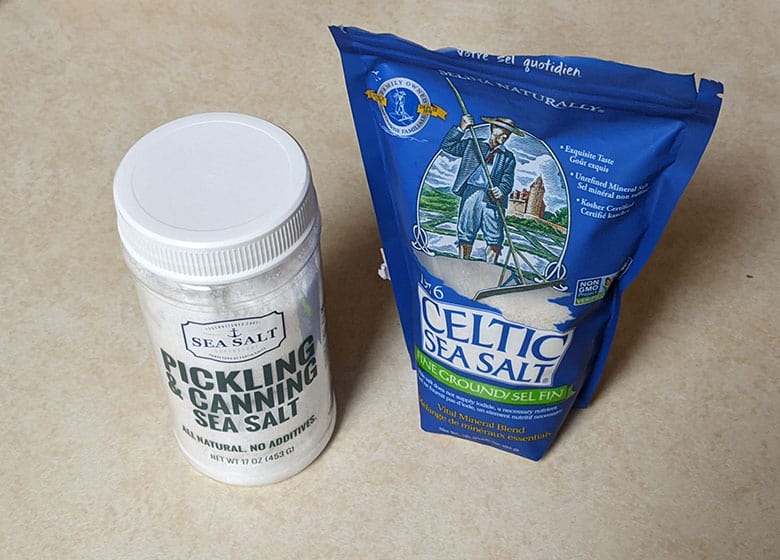
Extend the Life of Your Produce Through Fast Pickling
Making fast pickles at home is an incredibly easy process, and requires very few ingredients. Using only vinegar, water, salt, and sugar, you can create the perfect basic pickle brine that you can add additional ingredients to that will last for up to two months in the refrigerator.
You can pickle anything you wish, but the fruits and veggies in this list are our favorites for fast-pickling. Refer to the list of additional ingredients for inspiration, and make sure you’re using fresh brine and food-safe containers to pickle your produce in.
Do you have any favorite ways to pickle quickly – or favorite flavors that can get soaked up in just a few days? We’d love to hear how you experiment with fast pickling below in the comments!
But, you’re now well on your way to getting the most out of your produce through fast pickling. Good luck!
